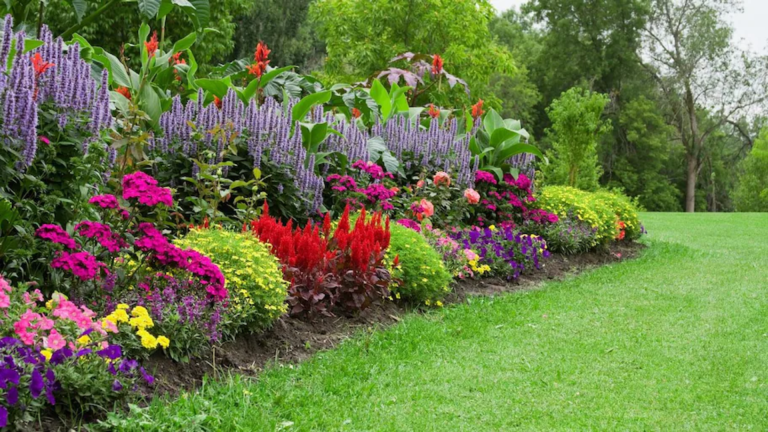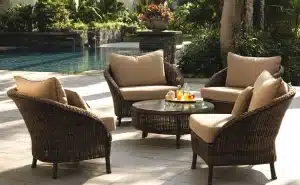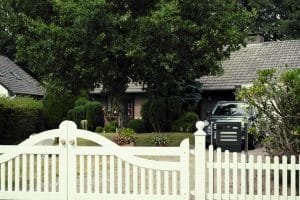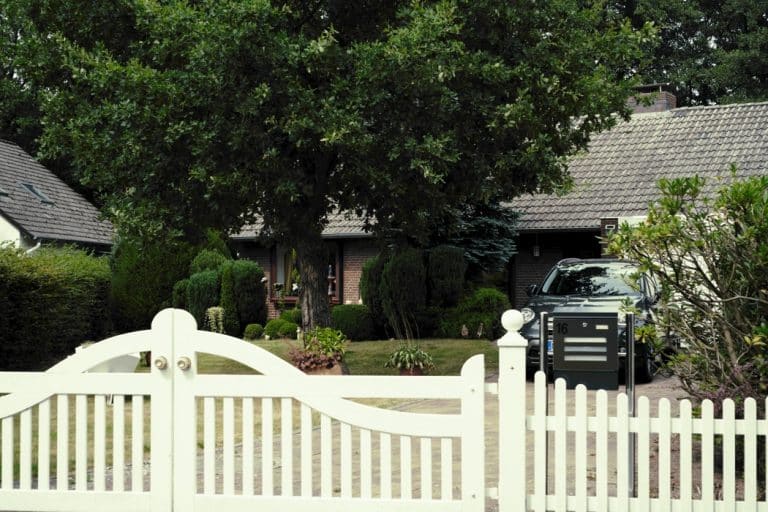Unwanted grass in flower beds is one of the most common headaches for gardeners. You spend hours planning and planting a beautiful garden, only to find thin blades of grass sneaking through your carefully arranged flowers.
Keeping grass away from your flower beds matters for three key reasons:
- It makes your garden look neat and well-kept
- It stops grass from stealing water and nutrients from your flowers
- It reduces the time you spend on garden upkeep
In this guide, you’ll find practical methods to remove existing grass from your flower beds and simple techniques to stop it from coming back.
I’ve tested these methods in real gardens, and they work. With the right approach, you can have grass-free flower beds that allow your plants to grow without competition.
How to Keep Grass out Of Flower Beds?
1. Manual Removal
I find that pulling grass by hand works best for small areas. You need to grasp the grass close to the ground and pull gently but firmly. This helps remove the entire root system.
The right tools make this job much easier. A hand fork or a weeding tool with a forked end works well for loosening the soil around grass roots. For stubborn patches, try a hand trowel with a pointed tip. Water the area first if the soil is dry – this makes pulling much easier.
2. Digging and Edging
Creating clean lines between your lawn and flower beds stops grass from spreading. I use a spade to cut a straight edge around my flower beds, about 4-6 inches deep. Physical barriers make a huge difference. You can install plastic, metal, or stone edging that goes several inches into the soil.
This blocks the grass roots from creeping into your beds. The barrier should stick up about 1-2 inches above soil level for best results. Check your edges twice a year for grass that might be finding its way over or under.
3. Use of Mulch
Mulch is one of my favorite ways to stop grass growth. It blocks sunlight from reaching grass seeds and creates a barrier they can’t push through. Apply a 2-3 inch layer of mulch across your flower beds.
You can use wood chips, pine straw, or compost. The mulch also keeps moisture in the soil and slowly adds nutrients as it breaks down. Make sure to refresh your mulch layer once or twice a year, as it will thin out over time.
4. Smothering Methods
I’ve had great success using everyday items to smother grass. Lay cardboard or several layers of newspaper directly on the grass, then wet it thoroughly. Cover this layer with soil or mulch.
The paper materials block sunlight while allowing water to pass through. They’ll break down over time, adding organic matter to your soil. Weed barrier fabrics work, too, but I prefer the natural options since they feed the soil as they decompose.
5. Natural Herbicides
You can make effective grass killers from items in your kitchen. A mix of white vinegar, salt, and a tiny bit of dish soap works well on unwanted grass. Spray this mixture directly on grass in your flower beds, being careful to avoid your plants.
The vinegar and salt dry out the grass while the soap helps the mixture stick to the blades. This needs to be reapplied more often than chemical options, but it’s safer for the soil, beneficial insects, and the plants you want to keep.
Prevent Future Growth of Grass in Flowerbeds
1. Install Proper Edging
I’ve found that good edging is your first defense against grass invasion. Steel edging lasts many years and creates a clean barrier between your lawn and flower beds. It should go at least 4 inches deep in the soil to block most grass roots.
Stone edging looks great and can last for decades. Stones set in mortar form a solid wall that grass can’t cross. If you choose loose stones, press them firmly into the soil and overlap them to avoid gaps.
Deep plastic edging is more budget-friendly and works well if installed correctly. Make sure it extends 5-6 inches into the ground and 1-2 inches above the soil. This height stops grass from simply growing over the top.
2. Maintain a Mulch Layer
A good mulch layer is one of your best tools against unwanted grass. I recommend keeping a 3-4 inch layer of mulch in all your flower beds. This depth stops sunlight from reaching grass seeds and makes it hard for any shoots to push through.
You’ll need to add fresh mulch once or twice a year. Spring and fall are perfect times to check your mulch depth and add more as needed. Look for spots where the layer has thinned to less than 2 inches.
Different mulches have different lifespans. Wood chips might last 1-2 years, while pine needles break down faster and need more frequent replacement. Whichever type you choose, make sure it covers all bare soil in your flower beds.
3. Routine Maintenance Tips
I check my flower beds weekly during the growing season. This quick habit helps catch grass problems when they’re small and easy to fix. Look for thin green blades poking through your mulch or edging.
Hand-pull any grass you spot right away. Getting the entire root is key, so use a small hand tool to dig around the base if needed. A quick five-minute check can save hours of work later.
Light hoeing between plants disturbs grass seeds before they can establish. Do this monthly, just scratching the surface of your mulch without disturbing your flower roots. This simple step breaks up any grass that’s trying to take hold.
4. Avoid Common Mistakes
The biggest mistake I see is leaving gaps in barriers. Grass needs only a tiny opening to send runners into your flower beds. Check your edging for cracks or spots where it doesn’t meet the ground tightly.
Using low-quality barriers often leads to frustration. Thin plastic edges that bend easily or landscape fabric that tears quickly won’t stop grass for long. Invest in better materials that will last for years.
Many gardeners forget that grass can grow from seeds blown by the wind or dropped by birds. Even with perfect edges, you’ll need to watch for new grass starting from above. Regular maintenance checks help catch these before they become established.
Eco-Friendly Alternatives to Chemical Herbicides
Corn Gluten Meal as A Pre-Emergent
I’ve had great success using corn gluten meal in my flower beds. This natural byproduct of corn milling stops grass seeds from sprouting roots. Sprinkle it across your flower beds in early spring, before grass seeds start to grow.
Use about 20 pounds for every 1,000 square feet. Water it lightly after applying, then let it dry out completely. As a bonus, corn gluten meal adds nitrogen to your soil as it breaks down, feeding your flowers at the same time.
Boiling Water or Flame Weeding for Spot Treatment
For small patches of grass that pop up, I grab my kettle. Boiling water poured directly on unwanted grass kills it quickly by breaking down plant cells.
Flame weeding is another option for small areas. Special tools heat the grass just enough to burst its cell walls without actually burning the plant. Both methods are completely chemical-free and leave no harmful residues in your garden soil.
Companion Planting Techniques to Crowd out Grass Naturally
I plant thick ground covers between my flowers to naturally prevent grass invasion. Fast-spreading plants like creeping thyme, sweet alyssum, or sedum form living mulch that grass can’t push through.
Plants with dense root systems help too. Try ornamental grasses, day lilies, or hostas around the edges of your flower beds. Their roots take up space underground, leaving little room for the grass roots to establish.
Tools that Make the Job Easier
Garden Tools
I rely on my garden knife for precise cuts around flower beds. It slices through the grass roots cleanly and helps me create sharp edges between the lawn and flowers.
Weed pullers with forked ends grab grass clumps from below. The claw design lifts entire root systems out without much effort on your part. Look for ones with long handles to save your back.
Good edging tools create clean lines that are easier to maintain. I prefer half-moon edgers with foot platforms that let you use your body weight to cut through tough soil and roots.
Long-Handled Hoes vs. Hand Tools
Long-handled hoes let me work while standing, which saves my back during big jobs. The stirrup or loop hoe works best for me because it cuts grass on both the push and pull motions.
Hand tools give you more control for work around delicate plants. A hand cultivator with three prongs can dig out grass roots from tight spaces without damaging your flowers.
I keep both types in my garden shed. Long-handled tools for open areas and larger jobs, hand tools for detail work and tight spaces. This combination makes any grass removal task more manageable.
Protective Gloves and Kneeling Pads
Good gloves are a must for grass removal. I look for waterproof gloves with puncture resistance for the fingers and palms. They keep your hands dry and protect against cuts.
Kneeling pads save your knees during long weeding sessions. Thick foam pads are light and easy to carry as you move around your garden. Foldable bench-style kneelers with handles help you stand up without straining.
A rolling garden seat works well for larger beds. It keeps you off your knees completely and holds small tools in attached pockets. This can turn a painful chore into a much more comfortable task.
Conclusion
Keeping grass out of your flower beds takes effort, but the results are worth it. Clean, grass-free beds make your flowers stand out and grow better by giving them all the water and nutrients they need.
Regular maintenance is the real secret. I’ve found that spending just a few minutes each week checking for grass invasion saves hours of work later on. The methods we’ve covered—from physical barriers to natural solutions—all work well when used consistently.
The perfect grass-free flower bed isn’t a one-time project but an ongoing process. Try combining different methods based on your garden’s needs. Use barriers at the edges, mulch throughout, and spot-treat any grass that sneaks through.
I’d love to hear which methods work best in your garden. Small changes in your routine can make a big difference in how your flower beds look and how much time you spend maintaining them.

















